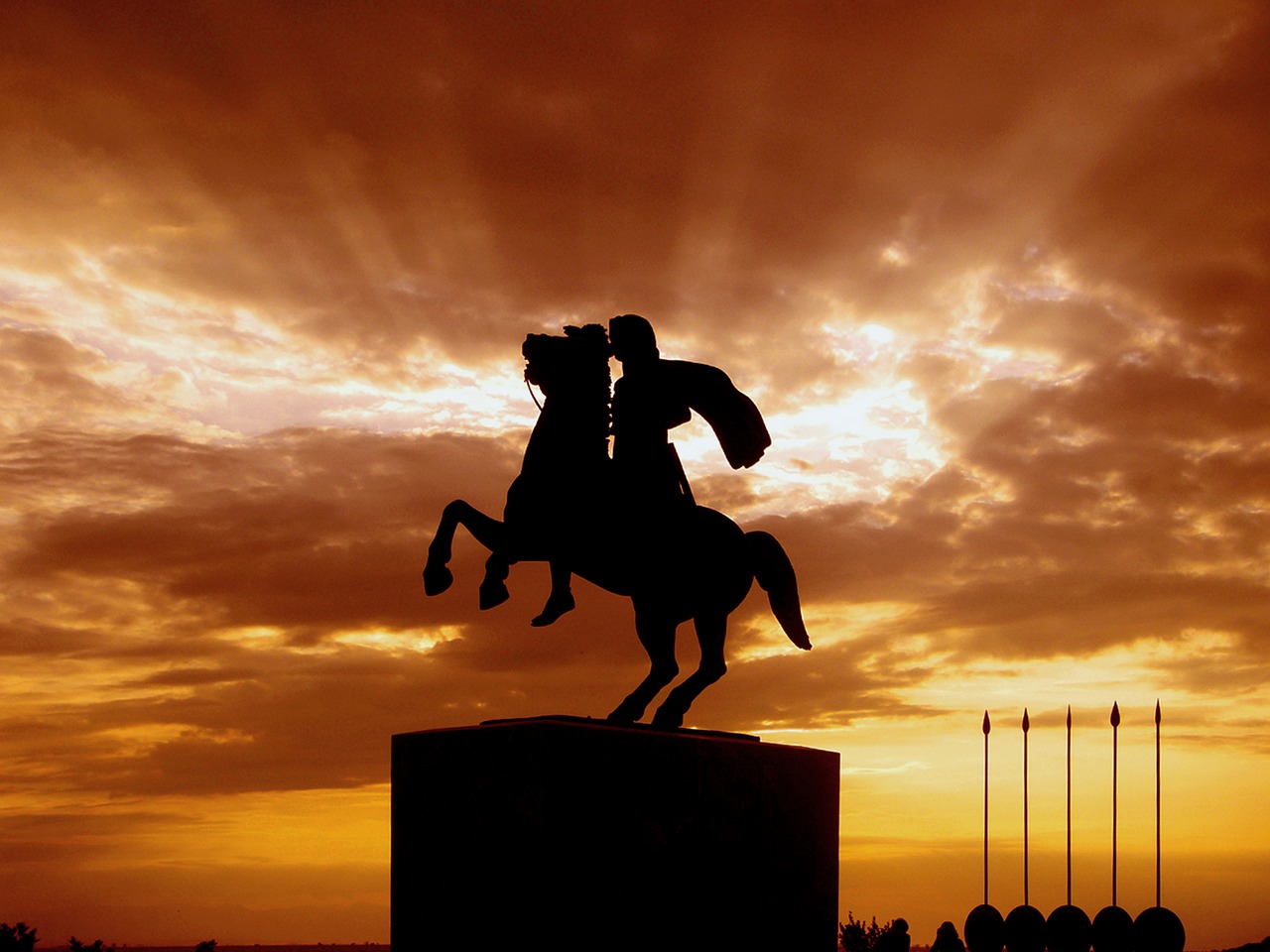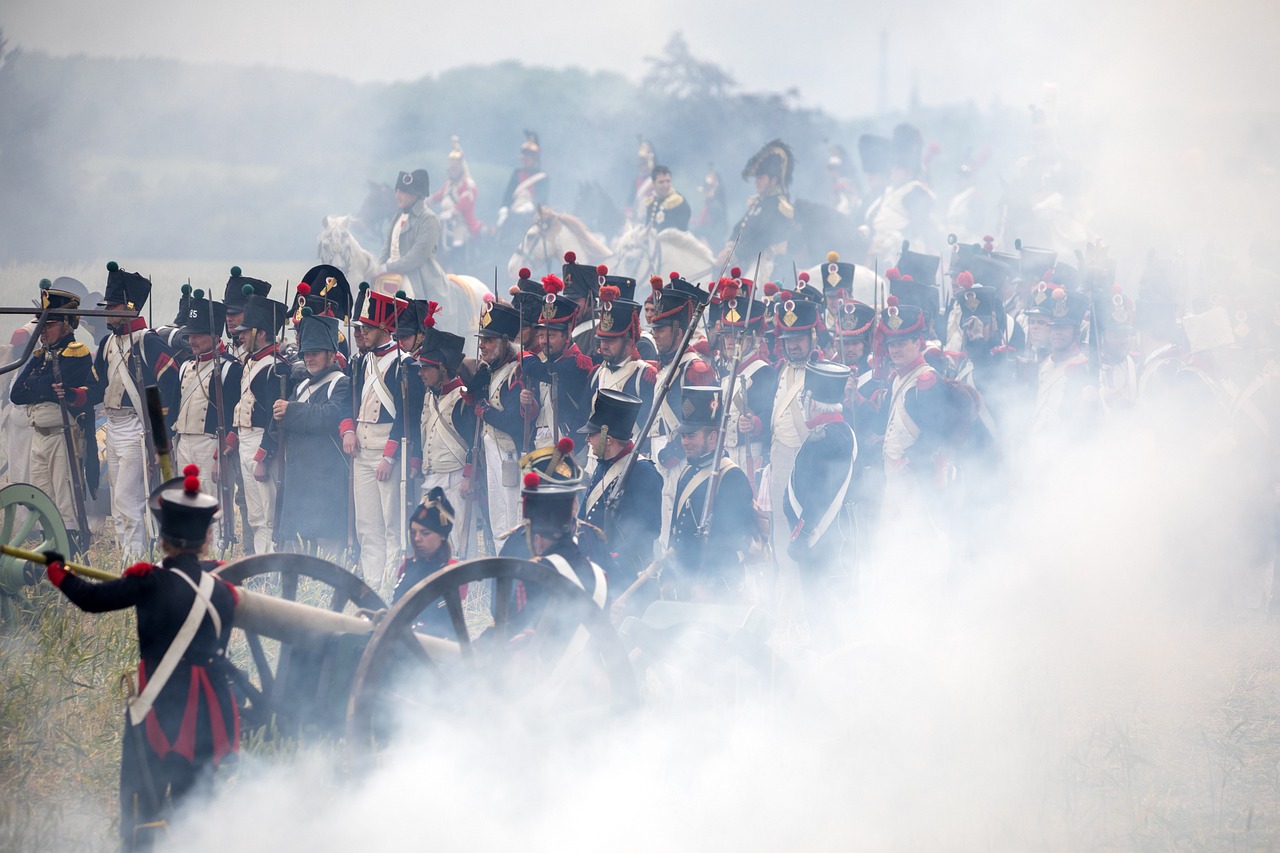Below are the ORIGINAL, CORRECTED versions of the editing challenges. Compare them to to the corrections you made.
Keep in mind, there’s often more than one way to correct the same mistake. Just because your version is not identical to mine does not necessarily mean it is wrong. E-mail me with any doubts or questions – the first three consultations are FREE!
All editing challenges are adapted from https://nationaltoday.com (2023) and https://www.history.com/this-day-in-history (2022).

On This Day: June 1
Sojourner Truth was born a slave, but escaped and became the first black woman to successfully sue a white man for her son’s freedom. On June 1, 1843, at the age of forty-six, she left home to “speak the truth” in favor of equality for all. Helen Keller was both blind and deaf, but went on to become an influential writer and lecturer, travelling the entire world to speak on behalf of the disabled, women’s suffrage, labor rights, and world peace. She was awarded the Presidential Medal of Freedom four years before her death on June 1, 1968. Compared to that, Thomas Edison’s first patent on this same day in 1869 for an electronic voting machine was child’s play.

On This Day: June 2
Rome was not built in a day, and it didn’t fall in one, either. Most historians agree that the Western Roman Empire had completely collapsed by 476 A.D., when the last emperor, sixteen-year-old Romulus Augustulus, was unseated by the barbarian general Odoacer. The Germanic invasion began in 406, however, resulting in the city itself being overrun and looted by Visigoths in 410 and Vandals on June 2, 455. Another famous sack occurred on this day in 1763 in modern-day Michigan. A group of Chippewa Native Americans approached Fort Michilimackinac and offered to play a game of lacrosse with the soldiers. They chased a stray ball into the Fort and attacked from within. Surprise! This was the start of Pontiac’s Rebellion.

On This Day: June 3
Zoot suits were a popular fashion statement among young Blacks and Latinos throughout the 1930s and ‘40s. Beginning on June 3, 1943, military personnel frustrated by the rise in gangs roamed the streets of Los Angeles with clubs, beating anyone wearing the attire. Many were injured, but at least no one died, unlike in the Tiananmen Square Massacre. The death of a former Communist Party head on April 14, 1989, had inspired 100,000 students to gather and demand democratic reforms. By June 3, with over a million demonstrators filling the square, Premier Li Peng ordered the military to end these protests by any means necessary. Soldiers shot indiscriminately into the crowd, killing hundreds and arresting as many as ten thousand.

On This Day: June 4
The 19th Amendment, granting U.S. women the right to vote, was finally passed by Congress on June 4, 1919, ratified officially a year later. The suffragettes’ big break had come with the outbreak of World War I, when women proved their merit by taking up their husbands’ jobs during the country’s greatest necessity. Construction on Fort Necessity also began on June 4, 1754, to help save 22-year-old Lieutenant Colonel George Washington from the wrath of a French officer whose brother had been murdered under his custody. Haphazardly thrown up, the fort didn’t offer much protection, and Washington was forced to sign a confession to the murder in French, which he didn’t understand – a very inauspicious start for the young leader.

On This Day: June 5
On June 5, 1967, the tiny, fledgling nation of Israel decided to take on its Arab neighbors for refusing to acknowledge its existence. It shocked everyone (especially Egypt) by more than doubling in size in just six days. Exactly one year later, another tragedy rocked the United States, already torn by anti-war protests and race riots following Martin Luther King Jr.’s assassination two months prior. That, of course, came after President John F. Kennedy’s 1963 shooting, as well. His brother, civil rights advocate Robert Kennedy, was the favorite to follow his footsteps into office, but then he, too, was gunned down by a Palestinian mad about Israel. Instead, Richard Nixon went on to become one of America’s most-hated presidents.

On This Day: June 6
Austrians welcomed Adolf Hitler as he marched into his home country to claim it for Germany in 1938, but death and oppression followed the Nazis. By 1944, Hitler controlled most of Europe, and the Allies’ only chance to win World War II was an amphibious assault like never seen before. It went by codename “Operation Overlord,” but is better known today as D-Day. In the initial assault on June 6 near Normandy, France, American, British, and Canadian troops stormed the beaches with 160,000 troops. Four thousand Allied soldiers died, but it was the justly continental toehold they needed to completely change the war’s tide. France was liberated within three months and the Germans surrendered unconditionally less than a year later.

On This Day: June 7
Small area doesn’t necessarily mean few people – Singapore is only 280mi2 (726km2), yet it boasts over five million citizens. The densest country, Macau, squeezes nearly seven hundred thousand people into just 13mi2 – 54,000 people per square mile! Coming in second for both size and density is Monaco, comprising 37,000 citizens in less than one mile squared. Tiny Vatican City is just 0.19mi2, having separated from Italy on June 7, 1929. Five hundred people live there, but twenty-five thousand tourists visit daily. This is also the day, in 1494, that the Treaty of Tordesillas was signed, dividing the New World between Spain and Portugal. It’s the reason why Brazil remains the only Portuguese-speaking country in South America.

On This Day: June 8
June 8 has been a popular day for major invasions that shook the world. In 452, for example, Attila the Hun finally entered Italy. For centuries, Germanic tribes had been pushing into the Roman Empire to get away from his ancestors. Visigoths and Romans joined forces to stop Attila, but their armies were virtually wiped out. He died a year later from a nosebleed. The Prophet Muhammad also passed away on June 8, 632, inspiring his followers to spread his words in the great Muslim Conquest. Finally, the Viking Age also dawned on this day in 793, when a group of longships from Norway launched a violent surprise attack on St. Cuthbert’s monastery off the coast of northeast England.

On This Day: June 9
Muslims seized control of Egypt on June 9, 641, nine years (nearly to the day) after the Prophet’s death. Their great conquest seemed unstoppable until Odo of Aquitaine (modern-day France) defeated them at Toulouse this same day in 721. This is also the date in 1898 that China “rented” Hong Kong out to the United Kingdom free of charge for ninety-nine years, and exactly two years after that when angry Boxer rebels burned down a Beijing racecourse, symbolic of the Western privilege they were protesting. Fortunately, that didn’t stop Secretariat, arguably the greatest horse in history, from winning the coveted Triple Crown on June 9, 1973, and setting a world record after covering 1.5 miles in 2 minutes, 24 seconds.

On This Day: June 10
In 1692, after two girls from Salem, Massachusetts, started suffering from mysterious convulsions and hallucinations, their dumbfounded doctors blamed witches. Bridget Bishop was hanged on June 10, the first of fourteen women and five men executed in the wave of sham trials that followed. Sixty years later, American colonists considered themselves much more enlightened. One of the greatest scientific minds was Benjamin Franklin: writer, politician, inventor, and lover of knowledge. On June 10, 1752, he famously (albeit uncertainly) flew a kite during a thunderstorm to prove the connection between lightning and electricity. Another, more modern advancement for science also took place this day in 2003, when the Spirit Rover was launched by NASA to begin its fifteen-year-long exploration of Mars.

On This Day: June 11
The first shots of the Revolutionary War in April 1775 were never supposed to happen, but it became much harder to avoid full-blown war after major battles at Fort Ticonderoga and Bunker Hill. On June 11, 1776, Thomas Jefferson and four others were granted three weeks to compose a convincing document laying out their arguments of why Americans could and should split from Great Britain. Their Declaration of Independence was presented to Congress on June 28 for debate and revisions (including dropping Jefferson’s clause condemning slavery), and on July 1, Congress voted unanimously to pursue autonomy, knowing they’d all be hanged in the likely event of failure. July 4 is celebrated annually as the day the Declaration was officially adopted.

On This Day: June 12
Ferdinand Magellan stumbled upon the Philippines in 1521 and claimed the archipelago for Spain. He died there a month later, shot by a poisoned arrow while meddling in their politics. Despite periodic resistance, Spanish rule continued until they lost the Spanish-American War. U.S. ally Emilio Aguinaldo declared his country independent on June 12, 1898, and drew up the first democratic constitution in all of Asia. The 1899 Treaty of Paris, however, passed control of the Philippines directly from Spain to the U.S. for $20 million. Enraged at this betrayal, Aguinaldo launched right into a new, even costlier war. Priests were tortured and entire islands wiped out to bring the Filipinos under control. Real independence wasn’t granted until July 4, 1946.

On This Day: June 13
Alexander the Great was never defeated once in his life. At the age of twenty, the young Macedonian king united Greece to eliminate the Persians once and for all. After that, he conquered Egypt and even northern India, but his exhausted men refused to march any further. Alexander suddenly fell ill in Babylon and died on June 13, 323 B.C. at the age of thirty-two. His generals divvied up the giant conquest amongst themselves, leading to a number of smaller, yet powerful empires, like the Ptolemies in Egypt and Seleucids in Asia. The world’s first exoplanetary probe, Pioneer 10, also made it’s grand exit this same day in 1983, passing out of our solar system eleven years after leaving Earth.

On This Day: June 14
In the United States, every child is taught to “pledge allegiance to the flag” and it even has its own holiday, commemorating Congress’ 1777 resolution to officially adopt our beloved “Stars and Stripes” design. Of course, the original only bore thirteen stars in addition to the thirteen red and white stripes, one for each colony. The number grew as states were added. The Bear Flag Revolt of 1846 also began this day, when ex-patriots living in Mexican-controlled California rebelled and tried to start a new “California Republic.” It only lasted three weeks before the bear (with a star in honor of their inspiration, the Lone Star Republic) was swapped out for American red, white, and blue – the plan all along.

On This Day: June 15
It’s a little-remembered fact that George Washington started off as the bungling British officer who sparked the French and Indian War. Over time, however, he redeemed himself, so much so that the Second Continental Congress unanimously voted to drag him away from his family’s plantation to lead their Continental Army on June 15, 1775. That same day in 1877, Henry Ossian Flipper became the first African American graduate of West Point Military Academy. Finally, what’s an officer without his horse? One year later, twelve cameras were used to capture the world’s first moving picture of a galloping steed in order to answer a burning question: are all four legs ever in the air at the same time? Yes, they are.

On This Day: June 16
Roller coasters are the bread and butter of amusement parks today, but where did they come from? Most experts point to the 1817 Parisian Promenades Aériennes, inspired by traditional “Russian mountains,” wooden supports up to eighty feet high, covered in ice for sledding, which have been around since the 17th century. Ironically, the Russians call rollercoasters “American mountains.” A mining company in Pennsylvania started selling tickets for riding their downhill coal-delivery cars in 1872, and the Switchback Railway opened at Brooklyn’s famous Coney Island (birthplace of the hot dog) on June 16, 1884. Meanwhile, Russia moved on to bigger and better things. Valentina Tereshkova became the first woman in space this same day in 1963 (twenty years before Sally Ride).

On This Day: June 17
On June 17, 1631, Mumtaz Mahal died while giving birth to her fourteenth child. This was unfortunately common at the time, but the love shared between her and her husband, Mughal emperor Shah Jahan, was anything but. Completely devastated, the Shah was determined to honor her memory with the greatest mausoleum ever built, and he succeeded. The Taj Mahal (meaning “Crown of the Palace”) remains one of the most widely-recognized architectural masterpieces in the world – one of the modern Seven Wonders, in fact (on par with the Great Wall of China, the Colosseum, Machu Pichu, Petra, Chichen Itza, and Brazil’s Christ the Redeemer). Completed in 1653, this Agra icon of pure white marble hosts eight million visitors each year.

On This Day: June 18
Having had enough of Britain’s abduction of American sailors and encouragement of Native Americans, the United States declared a fresh war against the motherland on June 18, 1812. Despite the burning of Washington, D.C., we eventually emerged victorious and a treaty was signed on Christmas 1814. Future president Andrew Jackson didn’t get the memo in time, however, so our greatest victory war actually came in New Orleans a month after the war had technically ended. At least the British could feel good about finally capturing Paris and stopping Napoleon Bonaparte in April 1814. He escaped, though, and Europe had to unite yet again to track him down. True defeat finally came at the Battle of Waterloo on June 18, 1815.

On This Day: June 19
Slavery had been illegal in most northern states for years, was outlawed in all US territories on June 19, 1862, and President Lincoln’s Emancipation Proclamation liberated those remaining in the South in January 1863. The problem is that nobody bothered to tell the slaves. It took the arrival of Union soldiers in Galveston, Texas, on June 19, 1865, to spread the word that the Civil War was over and slavery had been abolished. 250,000 men, women, and children had woken up that morning as property, and went to sleep free. This date was gradually adopted by African Americans as their own independence day celebration, known as Juneteenth, even though it didn’t become an official federal holiday until 2021.

On This Day: June 20
Sometimes very serious rebellions get silly names. The Boxer Uprising in China, which reached its peak on June 20, 1900, had nothing to do with dogs, underwear, or packing boxes. Many revolutionaries were talented marital artists, however, known then as “Chinese boxing.” Peasants had started attacking foreigners the year before, gradually gaining support from the government. On this day, one hundred thousand strong, they began a siege on Beijing’s diplomatic district that lasted two months. June 20, 1789, also saw the Tennis Court Oath, when representatives from France’s lower class swore to force King Louis XVI into a new constitution. His refusal led to the storming of the Bastille a month later, and the start of the bloody French Revolution.

On This Day: June 21
The United States holds the honor of maintaining one of the oldest active governments today, but it probably didn’t start when you think it did. We talk big about July 4, 1776, but that’s not even close. Our first government under the Articles of Confederation didn’t go into effect until 1781, and that was a total disaster. The new Constitution balanced power not only between federal and state levels, but also executive, legislature, and judicial branches. It was ratified on June 21, 1788, and officially went into effect March 4, 1789. The tiny island of Guam was also added as a U.S. territory on June 21, 1898, after being captured without any resistance during the Spanish-American War.

On This Day: June 22
English navigator Henry Hudson discovered both the Hudson River and Hudson Bay while searching for a northwest passage to Asia (giving England the right to claim Canada), but it wasn’t easy on his men. They mutinied on June 22, 1611, setting Hudson, his son, and seven other supporters adrift in a small boat, never to be seen again. In 1781, lost at sea and concerned about low water supplies, the crew of the slave ship Zong started throwing men overboard as well – at least 122 African captives. In the resulting insurance case, also on June 22, 1783, London’s Chief Justice ruled this was no different than killing horses. The public was enraged, and the Atlantic slave trade was banned within twenty-four years.

On This Day: June 23
The Roman Senate was the first of its kind, an evolution on Greek democracy that survived for over twelve hundred years. Do you know where the oldest legislative assembly is today? The Alþingi, in Iceland, was founded on June 23, 930. Another important invention that’s older than you may think and often taken for granted when we’re not complaining about it is the QWERTY keyboard. When Christopher Latham Sholes patented his first “Type-Writer” this same day in 1868, all the letters were organized alphabetically, but the machine’s arms would tangle when neighboring letter combinations were used. His solution was to redistribute them so that the most common letters were the hardest to get at. It’s inconvenient on purpose!

On This Day: June 24
Fifty years of “Thanksgiving” peace between New Englanders and the Wampanoags had grown tenser and tenser until their new chief, King Philip, ordered a massacre on June 24, 1675. Enraged colonists retaliated by wiping out his own villages, along with those of neighboring tribes. The United States also went to war with Mexico and won custody of Texas, California, and New Mexico in 1848, but it wasn’t enough. They wanted to build a railroad connecting the new territories, but there was a large chunk of Mexico in the way. Finally, on June 24, 1853, the opportunity arose to buy that missing final piece as part of the Gadsden Purchase. We acquired Arizona and finalized our southern border for $10 million.

On This Day: June 25
June 25 has been a momentous day for women: Venetian Elena Cornaro became the first woman to earn a PhD in 1678, and Kim Campbell was sworn in as Canada’s first female prime minister in 1993. The rainbow pride flag also debuted at a 1978 San Francisco parade, and the Battle of the Little Bighorn in 1876 was a great victory for Native Americans. Plains tribes had been gathering in outrage over the U.S. mining gold in their sacred Dakota mountains. Lieutenant Colonel Custer arrogantly believed he could take on three thousand Indians with just two hundred soldiers, and he paid with all their lives. Finally, June 25, 1950, also marks the North’s surprise invasion that started the Korean War.

On This Day: June 26
World War I took modern warfare to a whole new level of death and destruction. Many started referring to it as “the war to end all wars,” and to make that dream a reality, the United States proposed an international coalition between all the countries of the world dedicated to maintaining peace. We helped found the League of Nations on June 28, 1919, yet never joined. Twenty years later, World War II exploded. The idea was good, but the organization lacked any real authority or means of enforcement. Determined to learn from their mistakes and try again, delegates from fifty countries met in San Francisco to sign the United Nations Charter on June 26, 1945. Never give up!

On This Day: June 27
Are you looking for a good read? Bridge to Terabithia, Holes, and The One and Only Ivan are great choices for kids and English learners alike, having all been awarded the prestigious Newbery Medal for excellence in American children’s literature. The Story of Mankind by Hendrik Willem van Loon was the very first on June 27, 1922. Speaking of great stories, did you know the iconic Route 66 Highway, stretching from Chicago, Illinois, to Santa Monica, California, supposedly followed a path originally forged by Navy Lieutenant Edward Beale and his caravan of camels? Known simply as the “Mother Road” for decades, the winding thoroughfare was eventually bypassed and officially decertified on June 27, 1985, yet remains popular today in song and film.

On This Day: June 28
It took six years of debate for Congress to settle on the bald eagle as our national emblem (Benjamin Franklin wanted the turkey). That didn’t stop the bird’s population from plummeting at the start of the 20th century, however, due to pollution, electrocution, and overhunting. With less than a thousand left in 1978, they were added to the List of Endangered and Threatened Wildlife. A shocked nation committed to big changes, and everyone rejoiced on June 28, 2007, when the eagles were deemed safe once again. The LGBTQ community also celebrates this day in honor of the 1969 Stonewall Riots, when the violent police raid of a New York gay club triggered history’s first major demonstrations for equal rights.

On This Day: June 29
William Shakespeare was one of the greatest English wordsmiths of all time. Besides producing at least thirty-seven plays that remain popular today, he’s also credited with the first recorded use of over 1,700 words. Things weren’t always easy, though, especially on June 29, 1613, when a cannon misfired during a performance of Henry VIII and burned his Globe Theatre down to the ground. During the height of KKK terrorism, arson was just one of many threats African Americans had to worry about. They started fighting back with non-violent protests and, at long last, the Civil Right Act of 1964 was passed on June 29 as well, prohibiting all discrimination “on the basis of race, color, religion, sex or national origin.”

On This Day: June 30
It’s a bird! It’s a plane! It’s Superman’s original debut in DC Comics’ Action Comics #1 by Jerry Siegel and Joe Shuster on June 30, 1938! Generally considered the first comic book superhero, he unfortunately wasn’t around to stop the largest impact in recorded history exactly thirty years earlier. Eight hundred square miles of remote forest were flattened near the Podkamennaya Tunguska River in Siberia. Amazingly, trees at the epicenter remained standing, but people had been thrown to the ground forty miles away. It took scientists twenty years to reach the site, let alone solve the mystery, but it seems that an asteroid entering Earth’s atmosphere had overheated and exploded in a giant fireball, the equivalent of 185 Hiroshima bombs.